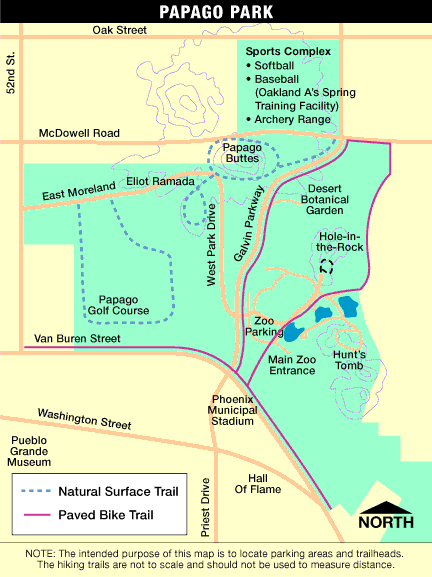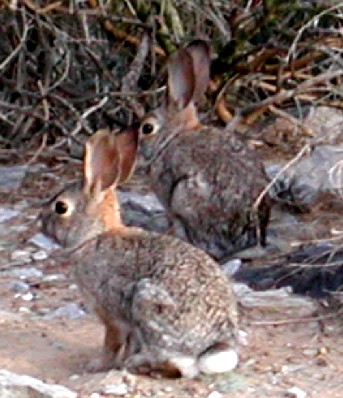
The Papago Hills are derived from reddish siltstone and conglomerate. The dark green shrubs dominating the landscape are Creosote Bush.
Arizonensis --> Sonoran Desert Naturalist --> Sonoran Desert Places --> Papago Park
Besides Papago Buttes and an extensive trail system, Papago Park also includes the Phoenix Zoo, the Desert Botanical Garden, Papago Golf Course, and a sports complex. The location is convenient to downtown Tempe and Phoenix and is just a few miles from Sky Harbor Intl. Airport.

The Papago Hills are derived from reddish siltstone and conglomerate. The dark green shrubs dominating the landscape are Creosote Bush. |
Sponsored Links |
West Park Drive as shown in the map below has been converted to non-motorized use and connects to extensive bike and foot trails. In the area near the zoo there are urban fishing ponds that bring in plenty of ducks and other waterbirds with the most interesting species appearing during fall and winter migrations. Both the zoo grounds the botanical gardens are excellent places to study wildlife including many native, non-captive yet approachable species. The nature enthusiast can find much of interest in this oasis within the urban area. Picnic areas are concentrated in the area north of the zoo parking lot.
BirdsMostly in order of abundance. Click on hyperlink for a detailed description and photo.
(includes observation made by Jim Burns) |
Map
Adapted from Phoenix Parks & Rec. Map. |
Sponsored Links: |
Mammals
This area has a severe shortage of predators: bobcats, coyotes, raptors and large snakes. As a result there are way too many rabbits and rodents that want to make lunch of anything vegetable. Landscapers and gardeners must fence anything green with chicken wire. The Garden has encouraged a population of feral house cats to help. Park planners and health officials should also recognize that these dense populations of especially rodents could pose health risks to the immune-compromised visitors.
|
There are many other cacti cultivated along Galvin Parkway and in the vicinity of the zoo and gardens that would not be here naturally. |
Don't Wait another Day to Start Your Own Domain & Website!
|
|
In general order of abundance:
|
Desert Senna shows yellow flowers often even during the hottest, driest months. It is an excellent xeriscape plant for the urban deserts of the Southwest. |
Sonoran Desert Naturalist Home
Page
Desert Places
Field Guide